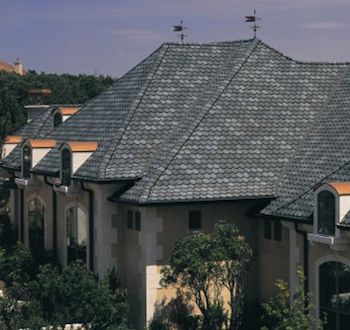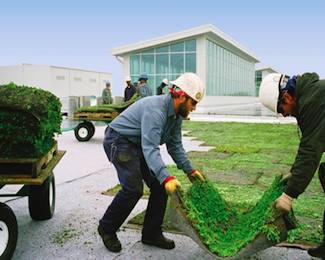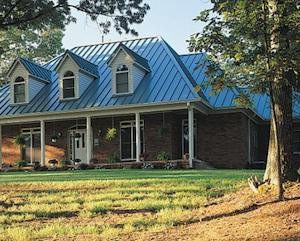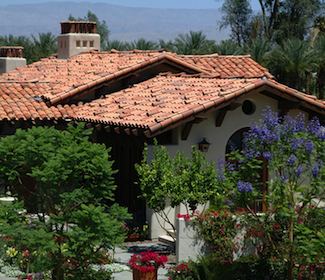Roofing Systems - Types of Roofs
Green Roof Systems:
Roofing materials need to be durable enough to endure the harsh conditions on the roof of a home. For a green home, they also need to have a minimal environmental impact. Careful consideration should be taken to select a material that is: made from recycled products, is easily recyclable, reduces a home's energy usage, and has a long life span.
To find out more about the green roof systems that are available today, visit our article on Green Roof Systems.
Asphalt Shingles:
Asphalt shingles are the most common type of roofing material in the U.S. due to their low cost, appearance, and ease of installation and maintenance.
However, they may not be the best choice for those looking for the greenest roofing options.
To find out more about the asphalt shingle roofing systems that are available today, visit our article on Asphalt Shingles.
Living Roofs:
If you're considering building a green home, a green, or living, roof can provide the ultimate example of your home's low impact on the planet. A living roof saves energy by reducing heat loss through the roof in cooler months, and by keeping heat out of the living space during hotter months.
Green living roof systems also prevent up to 94% of rainwater runoff by absorbing rain into the roof's soil material and using it for plant growth. The roof plants also absorb carbon dioxide and expel oxygen, which also helps to keep the rooftop temperatures lower.
Click Here to learn more about: Living Roofs. For information on the LiveRoof System from Hortech, click here.
Living Roof Case Study - The Ford Rouge Factory:
Ford has transformed its aging Rouge Factory Complex into a cutting-edge, LEED-certified sustainable manufacturing facility. One of the most important of these improvements is the 454,000 square foot living roof. Planted with sedum, the living roof collects and filters rainwater, reducing runoff. The sedum roof also insulates the factory, cools the surrounding area, absorbs CO2, creates oxygen, and provides habitat for birds and other animals.
To read more on this case study, be sure to read our article: Case Study - Ford Rouge Factory.
Metal Roofing Materials:
Although they are the most popular form of roofing material, asphalt shingles have several environmental drawbacks that may make them unattractive to a green home owner.
A wiser choice is a metal roof, which not only contains recycled material, but is also completely recyclable. A metal roof is also very durable, and can have a life span of 50 to 60 years, much more than asphalt shingles.
Click Here to for more information about: Metal Roofing Materials.
Clay Roof Tiles:
Modern clay roofing tiles are continuing the long tradition of clay roofing in building design. Clay roofing tiles are an attractive choice for a LEED-certified green home; they are extremely durable, efficient at prevent heat gain through a roof, and low-maintenance.
They are also a naturally beautiful choice to add to a home's attractiveness and value.
Go to our article on: Clay Roof Tiles.
comments powered by Disqus






























































































































































































